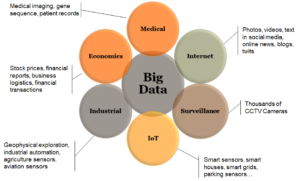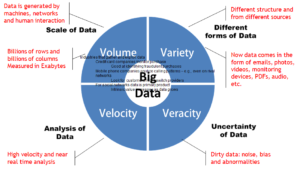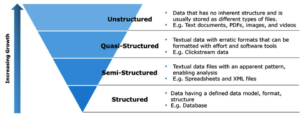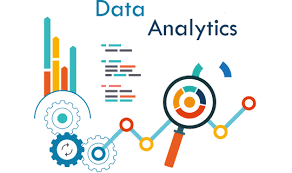Big Data Fundamentals
$1,000.00
- Duration: 2 Days
- Mode of Delivery: Online -Instructor-led training
- Job role: Data Analyst, Data Engineer
- Preparation for exam: None
- Cost: USD$1,000.00
If you’re completely new to big data and aren’t quite sure what it is, why it’s necessary, and how it works, then this is the course for you! We are going to clarify what big data is (and isn’t), while also defining some other related terms around data characterization and analysis methods. Then, we talk about some architectural problems with big data and how we solve them with cluster computing, distributed storage, and cluster management. Lastly, we will cover some of the popular technologies and illustrate how big data is used in the real world to hopefully shine a light on how big data is already impacting your daily life — whether you realize it or not. This training is designed to move participants from an initial understanding of Big Data terms and concepts to working with tool sets to dig into the data itself and start identifying the patterns and trends that would otherwise go unnoticed.
Audience
This course attests the following skills:
- A basic understanding of Big Data concepts and their applications to gain insight for providing better service to customers.
- Understands that Big Data should be processed on a platform that can handle the variety, velocity, and the volume of data by using components that require integration and data governance.
Prerequisites
No prior knowledge or experience needed
Skills Gained
After completing this course, students will be able to:
• Manipulate primitive data types in the R programming language using RStudio or Jupyter Notebooks.
• Control program flow with conditions and loops, write functions, perform character string and date operations, and generate regular expressions.
• Construct and manipulate R data structures, including vectors, factors, lists, and data frames.
• Read, write, and save data files and scrape web pages using R.
• How to perform operations in R including sorting, data wrangling using dplyr, and making plots
Course outline
Module 1 – What is Big Data
• Characteristics of Big Data
• What are the V’s of Big Data?
• The Impact of Big Data
Module 2 – Big Data – Beyond the Hype
• Big Data Examples
• Sources of Big Data
• Big Data Adoption
Module 3 – The Big Data and Data Science
• The Big Data Platform
• Big Data and Data Science
• Skills for Data Scientists
• The Data Science Process
Module 4 – Big Data Use Cases
• Big Data Exploration
• The Enhanced 360 View of a Customer
• Security and Intelligence
• Operations Analysis
Module 5 – Processing Big Data
• Ecosystems of Big Data
• The Hadoop Framework
Schedule
Click on the following link to see the current Course Schedule
Our minimum class-size is 3 for this course.
If there are no scheduled dates for this course, it can be customized to suit the time and skill needs of clients and it can be held online, at a rented location or at your premises.
Click on the following link below to arrange for a custom course: Enquire about a course date












Reviews
There are no reviews yet.